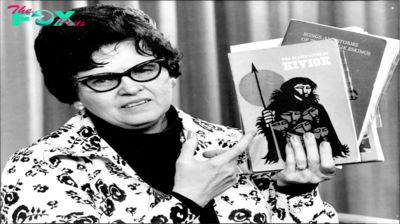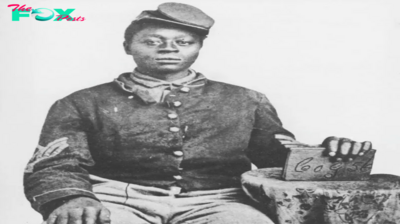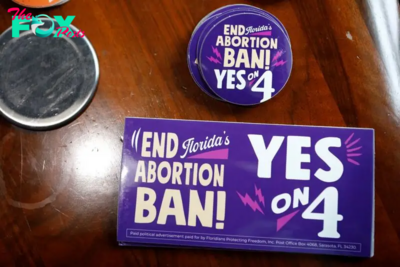History
Legacies of Slavery Across the Americas Still Shape Our Politics
The long History of slavery in the United States has been at the heart of public debates during the past two presidential elections cycles. During the 2016 U.S. presidential elections, public debates about reparations for slavery reemerged when Caribbean Community (CARICOM) led calls for reparations. Since then, new debates about Confederate monuments erupted in violence at Charlottesville, Va., and the brutal murder of George Floyd made clear that the legacy of slavery persists in deadly and dangerous ways.
Public conversations about the legacies of slavery and calls for reparations have continued to gain traction. Some states such as California and cities such as Boston created task forces to study the legacies of slavery and Jim Crow and formulate proposals of reparations to remedy the harms caused by these atrocities. And yet, across southern states such as Florida, new bills proposed the prohibition of the teaching of topics associated with slavery and race.
And yet, chattel slavery was not peculiar to the United States. The largest number of enslaved Africans were transported to the Caribbean and Latin America. In fact, Kamala Harris’ candidacy is great reminder of the need to see the roots and consequences of human bondage that existed across the Americas. She has direct links with this painful history as her paternal ancestors were enslaved, not in the United States, but in the British Caribbean colony of Jamaica. Harris’ family has roots in Saint Ann Parish, on the north coast of the island, where Marcus Mosiah Garvey, the founder of the Universal Negro Improvement Association and African Communities League (UNIA), was born.
The History of slavery in the United States cannot be dissociated from the History of human bondage in the Caribbean, and to understand this painful History we must also look to the History of Latin America, especially Brazil, where the largest number of enslaved Africans were transported during the era of the Atlantic slave trade.
Read More: How the World Got Hooked on Sugar
Approximately 12.5 million Africans were brought to the Americas between 1501 and 1875. During this period of the Atlantic slave trade, nearly 300,000 enslaved persons were transported in slave ships from African ports to mainland North America and more than 3.4 million disembarked in the British and French West Indies.
Although estimates of the Atlantic slave trade are constantly changing and increasing, more than 5 million enslaved men, women, and children landed on Brazilian shores. It represents the largest number in the Americas and more than ten times more than the number of African captives transported from the African continent to the United States.
Many people believe that slavery in Latin America was a benevolent institution. Several scholars and students think that slave owners freed their slaves out of pure generosity, embracing the idea that enslaved people were part of the family of slaveholders, and that the color line didn’t exist in countries such as Brazil.
But nothing could be further from the truth. Like in the British colonies of North America and the Caribbean, the working and living conditions of enslaved people in Latin America were equally violent and even more deadly. In the lucrative sugar plantations of northeast Brazil and the Caribbean, life expectancy was much lower than in the United States. Hard work conditions and sex imbalance undermined the “natural” increase of the enslaved population. So, slave owners kept importing new enslaved Africans to toil in these plantations. In urban areas, enslaved women often outnumbered enslaved men. Yet, in the streets of Brazilian cities and towns, they were submitted to constant surveillance and exposed to violence of all kinds. In the household of their slave owners, enslaved women were regularly submitted to sexual violence.
Enslaved people fought daily against this system of oppression. In cities of Latin America and the Caribbean, such as Lima, Rio de Janeiro, Mexico City, Kingston, and Havana, bondswomen toiled all day in the streets selling food, often in order to be able to buy the freedom of their loved ones. In Brazil, Black people often composed the majority of the populations of cities like Rio de Janeiro and Salvador. This concentration favored their efforts to preserve their languages, deities, foodways, artistic practices, music, dance, and festivities. Especially in the port areas, where bondsmen worked in the docks and as sailors, sometimes crossing the Atlantic Ocean, enslaved people kept connected with the newly arrived enslaved Africans from which they got news and even goods from their homelands in Africa.
Read More: How Wall Street Funded Slavery
In Brazil, as in West Africa and West Central Africa, bondswomen were key players in this process. They dominated the marketplace. They also became central figures in Candomblé, the Afro-Brazilian religion whose temples are widespread in Bahia, Maranhão, and other states across the country.
All over the Americas, and not only in the United States, by fighting back against their owners, Africans (especially African women) and their descendants played a central role in the construction of the Western Hemisphere’s economic, social, and cultural fabric, by feeding the cities, planting and harvesting sugar and cotton, nursing the children of slave owners, and taking care of their own children.
But why does all this matter for the 2024 election?

As anti-Black racism remains one of the most enduring legacies of slavery in the Americas, understanding the scope of slavery in other parts of the American continent beyond the United States helps us to more honestly face this painful History of human violence as not a U.S. anomaly but rather as part of a long shared human History of Europe, Africa, and the Americas.
Seeing slavery through this broader perspective allows us to better understand the history of the United States. It encourages us to embrace a more compassionate and generous view of the future of the United States and its increasingly diverse population, and therefore to challenge hate speech against immigrants, many of whom like Kamala Harris are also people of African descent with historical ties to slavery elsewhere in the Americas.
The continental history of slavery is American history and needs to be part of our textbooks and taught in our schools, if we dare to want to build a better world.
Ana Lucia Araujo is a historian and Professor at the historically Black Howard University in Washington D.C. and author of Humans in Shackles: An Atlantic History of Slavery (University of Chicago Press, 2024).
Made by History takes readers beyond the headlines with articles written and edited by professional historians. Learn more about Made by History at TIME here. Opinions expressed do not necessarily reflect the views of TIME editors.
-

 History1d ago
History1d agoHow Celebrities Changed America’s Postpartum Depression Narrative
-

 History2d ago
History2d agoThe Woman Whose Crusade Gave Today’s Book-Banning Moms a Blueprint
-

 History6d ago
History6d agoHow Black Civil War Patriots Should Be Remembered This Veterans Day
-

 History1w ago
History1w agoThe Democratic Party Realignment That Empowered Trump
-

 History1w ago
History1w agoWhy People Should Stop Comparing the U.S. to Weimar Germany
-

 History1w ago
History1w agoFlorida’s History Shows That Crossing Voters on Abortion Has Consequences
-

 History1w ago
History1w agoThe 1994 Campaign that Anticipated Trump’s Immigration Stance
-

 History1w ago
History1w agoThe Kamala Harris ‘Opportunity Agenda for Black Men’ Might Be Good Politics, But History Reveals It Has Flaws

















